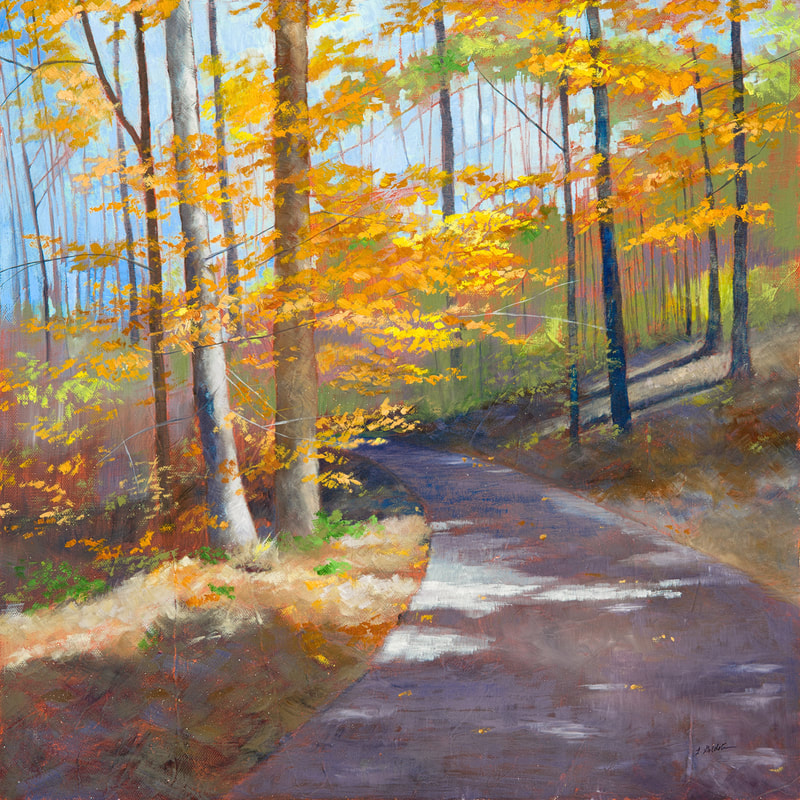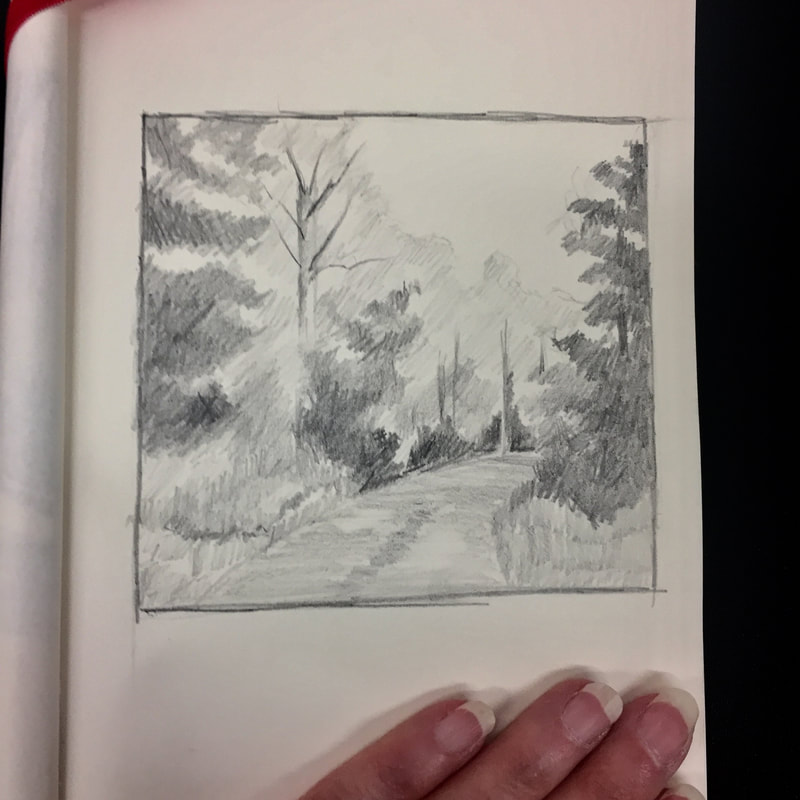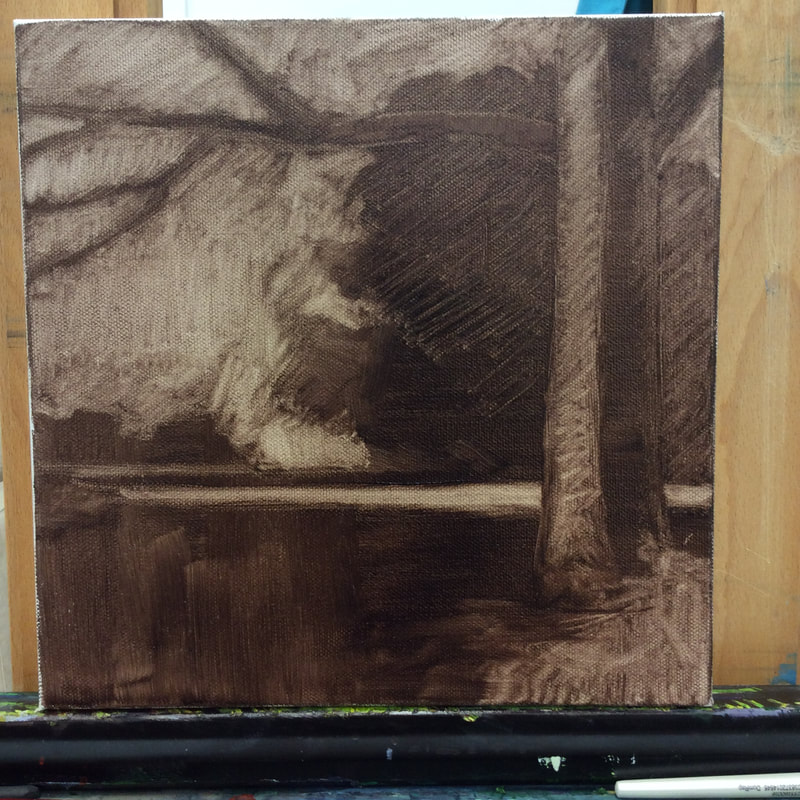|
"Closer to Winter," Oil on Canvas, 20x20inches, ©Lynn Goldstein Most people don't realize how difficult this making art business can be. To let you inside, here's a blow-by-blow account of a recent challenging painting experience I have been slamming my head against. First of all, let me say that I love what I do. I am particularly fortunate to be able to make things for emotional uplift and (sometimes) financial gain. That said, not all paintings are created equally. Some, though very rare, are what I refer to as "hole-in-one" paintings. This description is derived from my years of playing golf. When someone gets a hole-in-one it appears effortless. Those paintings bearing that description just seem to spring forth from some internal well of talent that goes into hiding as quickly as it appears. In other words, they are rare. Most recently, I have been painting feverishly in anticipation of a solo exhibition that I will be having in June (one of the paintings to be included is above). The work has been going smoothly. No hole-in-one paintings, but work with a minimum of angst attached to the experience. Not so for the most recent piece. Value sketch of painting before my start I started the painting as I almost always do. I went for a hike in the woods near my home. The day was beautiful, unseasonably warm, and pleasant. I took a multitude of resource photographs, excited at the prospect of revisiting the scenes in my work. After careful selection of the photograph, I made a value sketch (above). A value sketch is simply a black and white version of what I see. I can understand the composition, and better visualize how I am going to make the painting. Trouble started to rear its ugly head right away, but I didn't see it coming. You see, I didn't pay enough attention to my value sketch, instead getting tied up with I don't even know what. I continued painting, thinking with each step along the way that I had finally found the solution to reel me back into comfortable territory. Didn't happen. What would you do in a situation like that? I'll tell you what I did, and maybe you can use some of the the same techniques when you run into what appears to be failure. 1. I ripped the offending canvas off my easel and started two other oil paintings by staining the surfaces of two canvases, and for good measure, started an abstract pastel painting. Here's the oil underpainting to start another painting. An artist's version of getting back on the horse after being thrown, with the added benefit of no blunt force injuries. 2. To add more salve to my wounds, I hi-tailed it home and went for a walk in the woods before the predicted cold front blew into town. Once I was among my trees, I could decompress and enjoy the rest of my day, and come into the studio the next day with a fresh perspective. By using acetate over the painting, I can visualize whether a change will enhance or harm the final piece. 3. To see if what I had been envisioning as a correction would work, I put acetate over my painting. This is a great tool for making changes without commitment. I think that this change will work. It opens up the composition and helps lead the viewer into the picture plane. That said, this painting is still in time out in the corner of my studio where it will remain indefinitely while I work on other pieces that don't require multiple trips to a psychologist to improve!
I hope these ideas give you fuel for thought when you smack up against a failure. Please share your antidotes for trouble in the comments below. Solutions are always nice to have!
9 Comments
Maria Shields
2/1/2018 11:14:02 am
Thank you so much Lynn for a very candid and intimate view of how you build your paintings. I was very surprised to read about your struggles .. your work looks “effortless “ which is of course a high compliment. Thank you so much for sharing. I admire your work even more.
Reply
2/1/2018 05:37:00 pm
How kind of you to say, Maria. Yep, this particular painting has been a pebble in my shoe, but I think that I dumped the pebble out, and am making headway today. : ) 2/1/2018 05:35:39 pm
Thanks so much, Julia. Can't take credit for the acetate idea. I learned it from an artist friend of mine, Phoebe Peterson. I neglected to give her a shout out! Thanks again.
Reply
Lucy
2/1/2018 12:16:47 pm
"Closer to Winter" is awesome, Lynn! Thanks for the tips about how to resolve roadblock issues in making art work. The second suggestion has worked for me in other areas of my life, too. Just getting up and walking frequently seems to be helpful, preferably out in nature somewhere. I've not seen the acetate solution before; it looks beneficial in trying out various remedies in a non-commital fashion.
Reply
2/1/2018 05:38:45 pm
Thanks Lucy. "Closer to Winter" came without angst, thank goodness. The acetate is a great "trick" to employ with an oil or acrylic painting. Sadly, doesn't work for pastel, for obvious reasons. Thanks again!
Reply
7/3/2018 03:26:15 pm
Wow! Thanks for sharing the acetate trick! I have been using plastic wrap in the same way, but that isn't as stiff. Acetate would be so much easier to use.
Reply
7/4/2018 08:40:01 am
So glad that the tip helps. Yes, acetate would work better. Thanks for taking the time to comment, Simonne.
Reply
9/26/2020 11:49:52 am
I absolutely love your blog and find the majority of your post's to be precisely what I'm looking for. Do you offer guest writers to write content in your case? I wouldn't mind publishing a post or elaborating on a few of the <a href="https://tecteem.com/wapmight/">subjects you write regarding here</a>. Again, awesome web site!
Reply
Leave a Reply. |
|





